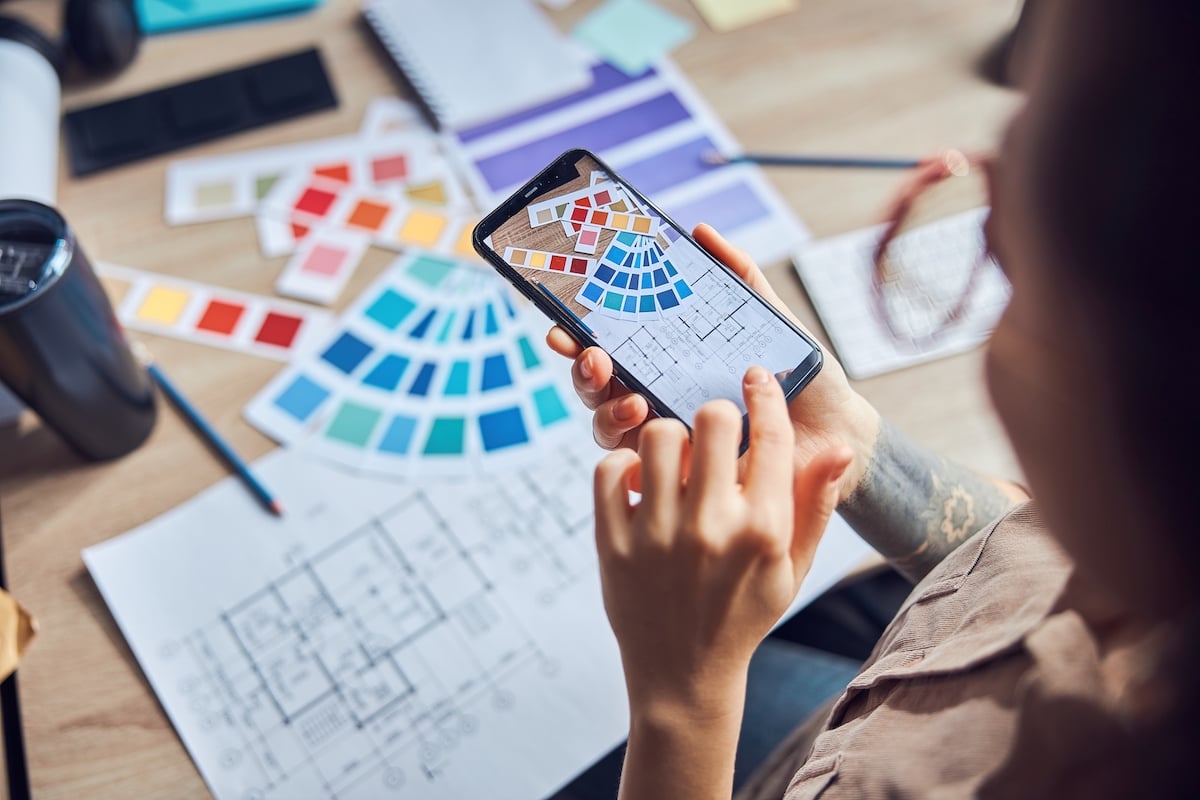
Let’s take a minute to focus on the impact COVID-19 and its respective shutdowns have had on millennials in the interiors industry. From an outsider’s perspective, many might think this generation would love the rather sudden push into remote work. After all, one study found that before the pandemic, 79 percent of millennials wanted to work from home. Across all generations of employees fortunate enough to keep their jobs through the economic downturn, many agree that the Great Reset, as ThinkLab often refers to it, has given us a much-needed opportunity to slow down, take a break, and reconnect with our friends and families.
Yet while these remote conditions provide ample opportunity to slow down, they also tell another story: one laden by lack of in-person connection and mentorship, something that millennials (and anyone new to a role) thrive on. In fact, the “Career Development in a Pandemic” research study released by Doodle found that 41 percent of respondents said their career development has stalled during the pandemic, and nine percent said the crisis has actually caused their careers to regress. Perhaps that’s because 50 percent of employees say mentorship from their manager has become more important to them during the pandemic, yet nearly the same share of employees (49 percent) say they aren’t getting enough training, coaching, and mentoring to advance their careers in these uncertain times. As a result, we know that mentorship across all industries is suffering.
So we sat down with one millennial design assistant from a company that built its foundation on a remote-work platform to understand her perspective on the topic of mentorship and remote work during the pandemic. And then we paired it with research on why this generation and others at risk for career backsteps during this challenging time need support now.
As Bekah Whitney, design and marketing assistant for Abigail-Elise Design Studio, explains, “We are an interior design firm with a primarily remote team so we’ve had to identify ways to connect remotely, mentor, and make sure the work gets done, while still proving a strong work-life balance.”
Setting clear boundaries
One of the biggest struggles our team at ThinkLab hears about is that of employees juggling the “always on” mentality. Remote work offers a bit of a double-edged sword—on one hand, it allows employees to be home and, to a certain extent, set their own schedules. For example, you can schedule a quick virtual yoga class at 2 p.m. or attend to your child’s e-learning after you wrap a client call. But it also blurs the lines between work and home in a more dramatic way than ever before. For instance, you might need to respond to a work email that comes in at 10 p.m. or edit your presentation in bed before you are up for the day.
Yet Whitney explains that her company has set clear rules to take the pressure off. For starters, the company president likes to email and text when things are on her mind—but she doesn’t expect her employees to respond in real time during nonworking hours. Whitney explains their solution was simple: “We were given a work phone after the pandemic hit. This allowed us to leave it behind when we are ‘off the clock’ and limits the number of text messages and emails to our personal phones during our personal time, some of which happen during regular business hours. We pick our own hours, as long as we get our standard eight hours in and are responsive to our client’s needs. We clearly communicate to our colleagues when we are stepping away so they can be available if we need them to help us out. I might take a break from 3 to 4 to do a household chore or take a walk outside, and then come back to my computer around 7 to check in on email. During that time, one of my colleagues will be available for client needs. This practice gives our clients more times when someone from our firm is responsive and available while simultaneously providing our employees with the flexibility they want. But it all starts with boundaries and proper communication around scheduling.”
Finding unique ways to mentor at-risk employees
According to recent research from the Pew Research Center, 67.4 percent of single mothers with children younger than 18 at home were employed in September 2020, compared with 76.1 percent in September 2019. Unpartnered fathers experienced a less severe decrease (about 4 percentage points), about the same as the drop seen by partnered mothers and partnered fathers (about 5 percentage points each). This difference demonstrates the need, especially now, to mentor at-risk employees such as single mothers, particularly Black and Hispanic single mothers who are at an even higher risk of job loss.
One of the best ways to engage these women might be to have mentors of the same gender. In fact, according to research conducted by Olivet Nazarene University, 69 percent of women and 82 percent of men have a mentor of the same gender. What’s more, it’s important to recognize that mentorship gaps exist in specific industries and to respond accordingly. For example, only 43 percent of healthcare workers report having had mentors, compared with 66 percent in the science industry.
What this means for millennial development
To help bridge this interim gap, management must recognize some obvious limitations. For starters, millennials cannot learn if they don’t have access to mentors. The Doodle study found that almost half (47 percent) of the respondents said they don’t have access to their manager’s calendar in case they need to schedule a quick touch-base meeting with them. What’s more, only 18 percent of the respondents said their boss schedules weekly one-to-one meetings with them. Twice-weekly one-to-one meetings, meanwhile, are even less common (14 percent).
The Olivet Nazarene study found that only 14 percent of employees directly asked someone to be their mentor. The rest of the mentorships either evolved organically or the mentor reached out to the mentee. Whitney agrees that these statistics reflect reality, adding that new employees already can be afraid to speak up; when they can’t even access their mentor, there’s clearly a problem. She notes, “When you’re new to your career, it can be daunting to ask for help, or offer constructive criticism when a specific communication style isn’t resonating with you. New employees need an environment where they are encouraged to not only ask for feedback, but also give feedback.”
Fortunately, the old saying rings true—this too shall pass. So although we won’t be in a remote-work situation forever, many teams will continue to work remotely and therefore require some of the skills learned during this unique time. And Whitney, for one, believes this reality ultimately is a benefit. She leaves us with this hopeful outlook on remote work: “The wellness aspect of giving people the freedom to live where they want and not be restricted by work’s physical hours or location is unreplaceable. Creating freedom of work is an amazing addition to people’s lives and the way of the future. Yet in doing so, we need to also identify opportunities to mentor the next generation of designers.
Amanda Schneider is President of ThinkLab, the research division of SANDOW. At ThinkLab, we combine SANDOW Media’s incredible reach to the architecture and design community through brands like Interior Design Media, Metropolis, and Material Bank with proven market research techniques to uncover relevant trends and opportunities for the design industry. Join in to explore what’s next at thinklab.design/join-in.

